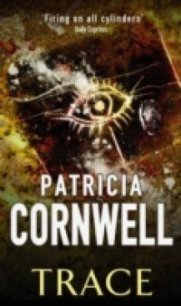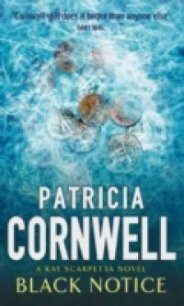All That Remains - Cornwell Patricia (читать хорошую книгу полностью TXT) 📗
6
Monday morning the road in front of my house was blanketed in deep snow, the sky gray and threatening more bad weather to come. I fixed a cup of coffee and debated the wisdom of my driving to Washington. On the verge of scrapping my plans, I called the state police and learned that 1-95 North was clear, the snow tapering off to less than an inch by Fredericksburg. Deciding that my state car wasn't likely to make it out of my driveway, I loaded the cardboard box in my Mercedes.
As I turned off on the Interstate, I realized that if I had a wreck or were pulled over by the police, it wasn't going to be easy explaining why I was heading north in an unofficial car with human skeletons in the trunk. Sometimes flashing my medical examiner shield wasn't enough. I never would forget flying to California carrying a large briefcase packed with sadomasochistic sexual paraphernalia. The briefcase got as far as the X-ray scanner, and the next thing I knew airport security was squiring me away for what was nothing less than an interrogation. No matter what I said, they couldn't seem to get it through their heads that I was a forensic pathologist en route to the National Association of Medical Examiners' annual meeting, where I was to give a presentation on autoerotic asphyxiation. The handcuffs, studded collars, leather bindings, and other unseemly odds and ends were evidence from old cases and did not belong to me.
By ten-thirty I was in D.C. and had managed to find a parking place within a block of Constitution Avenue and Twelfth. I had not been to the Smithsonian's National Museum of Natural History since attending a forensic anthropology course there several years before. When I carried the cardboard box inside a lobby fragrant with potted orchids and noisy with the voices of tourists, if wished I could leisurely peruse dinosaurs and diamonds, mummy cases and mastodons, and never know the bleaker treasures housed within these walls.
Rising from ceiling to floor in every available inch of space not visible to guests were green wooden drawers containing, among other dead things, more than thirty thousand human skeletons. Bones of every description arrived by registered mail every week for Dr. Alex Vessey to examine. Some remains were archaeological, others turned out to be bear or beaver paws or the hydrocephalic skulls of calves, human-looking artifacts found along the wayside or turned up by plows, and feared, at first, to be what was left of a person who had met a violent end. Other parcels truly did contain bad news, the bones of someone murdered. In addition to being a natural scientist and curator, Dr. Vessey worked for the FBI and assisted people like me.
Gaining clearance from the unsmiling security guard, I clipped on my visitor's pass and headed for the brass elevator that took me up to the third floor. As I passed walls of drawers inside a dimly lit, crowded corridor, the sounds of people levels below looking at the great stuffed elephant faded. I began to feel claustrophobic. I remembered being so desperate for sensory input after eight hours of class inside this place that when I finally escaped at the end of the day, crowded sidewalks were welcome, the noise of traffic a relief.
I found Dr. Vessey where I had seen him last, inside a laboratory cluttered with steel carts bearing skeletons of birds and animals, teeth, femurs, mandibles. Shelves were covered with more bones and other unhappy human relics such as skulls and shrunken heads. Dr. Vessey, white haired and wearing thick glasses, was sitting behind his desk talking on the phone. While he concluded his call, I opened the box and got out the plastic envelope containing the bone from Deborah Harvey's left hand.
"The Drug Czar's daughter?" he asked right off, taking the envelope from me.
It seemed a strange question. But, in a way, it was correctly posed, for Deborah had been reduced to a scientific curiosity, a piece of physical evidence.
"Yes," I said as he took the phalange out of the envelope and began gently turning it under the light.
"I can tell you without hesitation, Kay, that this is not a postmortem cut. Though some old cuts can look fresh, fresh cuts can't look old," he said. "The inside of the cut' is discolored from the environment in a manner consistent with the rest of the bone's surface. In addition; the way the lip of the cut is bent back tells me this wasn't; inflicted on dead bone. Green bone bends. Dead bond; doesn't."
"My conclusion exactly," I replied, pulling up a chair: "But you know the question will be asked, Alex."
"And it should be," he said, peering at me over the rim of his glasses. "You wouldn't believe the things that come through here."
"I suspect I would," I said, unpleasantly reminded that the degree of forensic competence dramatically varied from state to state.
"A coroner sent me a case a couple months ago, at chunk of soft tissue and bone he told me was a newborn child found in the sewer. The question was sex and race.' The answer was male beagle, two weeks old. Not long before that, another coroner who didn't know pathology from plants sent in a skeleton found in a shallow grave. He had no idea how the person had died. I counted forty-some cuts, lips bent back, textbook examples of green bone plasticity. Definitely not a natural death."
He cleaned his glasses with the hem of his lab coat. "Of course, I get the other, too. Bones cut during autopsy."
"Any chance this was caused by a predator?"
I said, even though I didn't see how it could have been.
"Well, cuts aren't always easy to distinguish from marks made by carnivores. But I'm fairly certain we're talking about some sort of blade."
Getting up, he added cheerfully, "Let's take a look."
The anthropological minutiae that drove me to distraction gave Dr. Vessey joy, and he was energized and animated as he moved to the dissecting microscope on a countertop and centered the bone on the stage. After a long, silent moment of peering through the lenses and turning the bone in the field of light, he commented, "Now, that's interesting."
I waited.
"And this was the only cut you found?"
"Yes," I said. "Perhaps you'll find something else when you conduct your own examination. But I found nothing else except the bullet hole I mentioned. In her lower lumbar, the tenth dorsal."
"Yes. You said the bullet hit the spinal cord."
"Right. She was shot in the back. I recovered the slug from her vertebra."
"Any idea of the location of the shooting?"
"We don't know where she was in the woods - or if she was even in the woods when she was shot."
"And she has this cut to her hand," Dr. Vessey mused, peering into the scope again. "No way to know which came first. She would have been paralyzed from the waist down after being shot, but she still could have moved her hands."
"A defense injury?"
I asked what I suspected.
"A very unusual one, Kay. The cut is dorsal versus palmar."
He leaned back in the chair and looked up at me. "Most defense injuries to the hands are palmar."
He held up his hands palm out. "But she took this cut to the top of her hand."
He turned his hands palm in. "I usually associate cuts on the top of the hand with someone who is aggressive in defending himself."
"Punching," I said.
"Right. If I'm coming at you with a knife and you're punching away, you're likely to get cut on the top of your hand. Certainly, you're not going to receive a cut to your palmar surfaces, unless you unclench your fists at some point. But what's more significant is that most defense injuries are slices. The perpetrator is swinging or stabbing, and the victim raises his hands or forearms to ward off the blade. If the cut goes deep enough to strike bone, I'm usually not going to be able to tell you much about the cutting surface."


